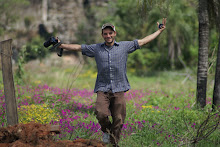Whereas one’s Peace Corps experience is an extremely decelerated process emphasizing the fundamentals of building community relationships, a Crisis Corps experience has a more heightened, task oriented feel to it. In effect, the Crisis Corps is the ultimate extension of resource identification and allocation: matching the linguistic and technical skill sets of returned Peace Corps volunteers with individuals, communities and countries that need them most.
Like the Peace Corps, the Crisis Corps is a statement by America, that we as Americans are present, both in times of joy as well as times of sadness, in the lives of our fellow human beings. Through our service, we are able to put a human face, touch, and character to the intangible tenets which make up the United States of America.
I am currently serving as an agroforestry Crisis Corps volunteer in the town of Tacana, San Marcos which is located 50 km south of the Mexican border in the southwestern highlands of Guatemala. I help to coordinate the reforestation efforts of the NGO CARE Guatemala and the local Tacana Forestry Office in a dozen rural communities hardest hit by Hurricane Stan.
Stan’s week long rainy presence over this remote mountainous region during the first week in October 2005 caused massive and widespread mudslides that destroyed houses, water systems, roads and bridges and turned countless hectares of arable land into a waste land of rocks and debris. Working along side two other Crisis Corps volunteers, civil engineer Ken Kartchner and live stock specialist Wayne Winzer, as well as resident Agroforestry Peace Corps volunteer Eric Black, our multidisciplinary team has been able to address some of the more pressing concerns of post hurricane recovery: bringing potable water systems back on line, increasing food security through small scale chicken and pig projects and land recuperation through the establishment of agroforestry systems.
Throughout the last three months I have found myself in the fortunate position of being able to provide meaningful technical support while sharing in the daily lives of rural community members as they summon the strength to pick up the pieces of their shattered lives and move forward with hope and purpose. To put it simply it is a sight to see and a lesson to be learned by all of us.
“As always in one’s Peace Corps experience, Crisis Corps experience and the experience of life overall, the learning curve is steep but the return on investment is more than fulfilling if one is keen enough to realize which currencies are of true value.
As they say: Life is an everyday affair.
